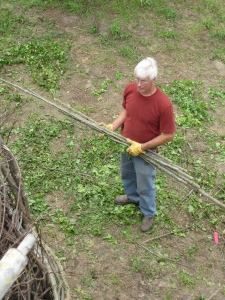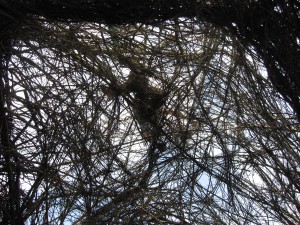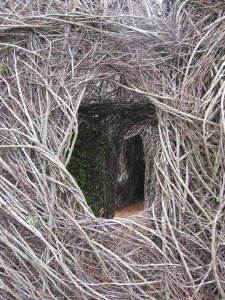More Words + One Image
August 16, 2020
Today I need to change the subject, or subjects, of the world that presses on us in these strange times. I am putting aside news of the pandemic and of politics. For a moment I need to look away from the wrongs, the injustices, the unkindnesses, the cruelties, and the violence directed towards others. Kindness, beauty, gratitude, and joy are on my radar today. And love, of course; however it shows up.
As part of today’s practice, this morning I picked up a book that I had set aside for a bit, The Book of Delights by Ross Gay whom I came across on an episode of On Being. If you aren’t familiar with him or his writing, I encourage you to look him up; he and his writing are remarkable. The Book of Delights was begun as a daily essay about something that struck the author as delightful. He writes as though he is speaking casually with the reader over coffee or on a long walk. He might be meandering around a mundane idea or topic when a profound truth or bit of wisdom quietly slips in unannounced, as if conjured through some alchemy of the writer’s words.
This morning I turned to Chapter 14 “ ‘ Joy is Such a Human Madness’ ” which Gay begins with a reference to the essay “Joy” by Zadie Smith. It would only be in quoting the entire essay that I might convey the full beauty and power of the writing, but I want to pull out a small favorite bit here. Towards the end of the essay he writes:
“Among the most beautiful things I have ever heard anyone say came from my student Bethany talking about her pedagogical aspirations or ethos, how she wanted to be as a teacher, and what she wanted her classrooms to be: ‘What if we joined our wildernesses together?’ Sit with that for a minute. That the body, the life might carry a wilderness, an unexplored territory, and that yours and mine might somewhere, somehow meet. Might, even, join.
And what if the wilderness…is our sorrow…. It astonishes me sometimes – no, often – how every person I get to know – everyone, regardless of everything, by which I mean everything – lives with some profound personal sorrow. Brother addicted. Mother murdered. Dad died in surgery. Rejected by their family. Cancer came back. Evicted. Fetus not okay. Everyone, regardless, always, of everything. Not to mention the existential sorrow we might all be afflicted with, which is that we, and what we love, will soon be annihilated. Which sounds more dramatic than it might. Let me just say dead. Is this, sorrow… the great wilderness? Is sorrow the true wild? And if it is – and if we join them – your wild to mine – what’s that? For joining, too, is a kind of annihilation. What if we joined our sorrows, I’m saying. I’m saying: What if that is joy?”
Again, I have to say that one should read Ross Gay’s essay in its entirety for full effect, for that punch-to-the-gut feeling that his words offer up. For me, this essay illuminates my understanding of the bittersweet of life and touches on thoughts of no light without the dark – thoughts that cover the distance from metaphor to the reality of the physical world.
No light without the dark. In drawing and painting, light and dark are critical; value/relative value (think grayscale) is everything! In making recent drawings I am constantly reminded of this. Color is important but the value, the light or darkness of that color, is what makes the most difference to the drawing. It is not unusual for the most subtle value shift to make a drawing sing. I am sharing here a recent soft pastel drawing for a consideration of light and dark and the relative values of color.

The Benefits of Inconvenience
December 5, 2014
At last the studio and house are returning to order after weeks (months!) of disruption and too much plaster dust, both the unavoidable side effects of some necessary repairs. The most obvious benefits to such chaos are the beautiful new studio ceiling and virtually new kitchen ceiling, not to mention pipes that no longer leak. Moving as much as possible out of the way of those doing the work was a perfect opportunity to cull some of the “stuff” stashed in corners and on shelves. And as the rooms fall back in place, there is a chance to see modes of organization and arrangement with a fresh perspective. But the best and unexpected benefit has been to hold books and notebooks, open them, and rediscover gems not seen or remembered for too long. Here are a few of the things I found.
From Kathleen Norris in The Cloister Walk:
“Poets understand that they do not know what they mean and that this is a source of their strength.”
The following was an unattributed quote in an old gallery newsletter. I would be very happy if there is anyone who can give me the source:
“The struggle to make a genuine picture (or for that matter, any work of art) is never a passive, but always an intentional act of the creative will, one through which the Self declares itself a conscious agent in the world. Painting a picture, therefore, far from being a frivolous or meaningless activity, is one burdened with existential import.”
A few things to think about as I get back to work in my new space!
Many thanks to Tom, Harry, and Matt; all good souls who did good work and solved unexpected problems!!
Stay Cool
June 22, 2011
It is officially summer in Richmond, and the days are warming up accordingly. What better way to cool off than to spend some time looking at new art in local galleries. Two group shows will open this Friday, June 24 offering cool space for a hot time. Check out the [work] 2011 show at the Visual Arts Center for a look at new work by faculty, staff, and board members with an opening reception 6-8 PM. Then move on to artspace with a gallery talk and reception 6-10 PM for the juried show radius 250 featuring work by artists living within a 250 mile radius of Richmond. And, yes, this is clearly self-promotion, since I am happy to be included in both shows!
DELIGHTFUL CONSTRUCTION: A REAL GEM
June 6, 2011
Recently I had the great pleasure of helping with Patrick Dougherty’s new installation at the Lewis Ginter Botanical Garden, Diamond in the Rough. And yes, this is a belated post, since the piece was completed a couple of weeks ago. There was so much to enjoy about working on this project: learning how these things are put together, learning how to draw with sticks, enjoying the smell of the material and the feel of the spaces, meeting new people and working with other volunteers, helping Patrick’s assistant Andy on the highest dome (on my birthday!), watching Patrick work, and having a chance to get to know him. Patrick is a remarkable artist and a remarkable person. Unlike an artist working alone in a studio, Patrick depends on the help of volunteers and is very aware of the community aspect of his work. He has to be open to whatever happens at the hands of his helpers, to be willing to not be in total control. As any artist, he begins with an idea – in this case a grid of eleven diamonds – and reacts and adjusts as the piece develops. Throughout the process, Patrick was sincere and generous with viewers and helpers alike. Now that the working is done, he has left behind not only a truly delightful installation to be enjoyed by many people in many different ways but also a sort of lovely cloud of kindness and generosity that has settled upon the many people he encountered during his three week stay here – one that surely gathers and settles wherever he finishes a project. It is not only the site of his installation that is changed by his work, but the people too!
Diamond in the Rough will be at the gardens for a long while, but it will change over time. So visit soon and visit often. You won’t be disappointed!
Studio Envy
May 28, 2010
Studio space can be a critical factor in the working life of an artist. The kitchen table, the corner of a room, or the space of a drawing table often have to make do. Garages and basements can offer an improvement in square footage but not necessarily in quality of space (I’m thinking of camel crickets, spiders, mold, and damp darkness). A dedicated room with heat, natural light, and running water nearby may seem a luxury. But there are other possibilities…
On a recent trip to Spain I visited the Museo Sorolla in Madrid. This oasis is a few metro stops from the historic center and main tourist area of the city. It is the former home and studio of the artist Joaquin Sorolla (1863-1923). The house was designed with a studio and two gallery rooms attached. Sorolla designed the surrounding gardens. What a gem! The house and studio hold not only many of Sorolla’s paintings but also his collections, from pottery to artifacts. With the exception of the rooms that now serve as gallery space, the house is much as it was when Sorolla died, and the visit offers an interesting glimpse into a creative life. This is the studio:
This is a view from the garden of the studio/gallery entrance (now the museum entrance):
And this is a view of one of the four garden spaces:
If I lived in Madrid, this garden would be a frequent destination; a place to read, think, sketch, be. And the studio; well, I’m not sure I would know what to do with so much space!








